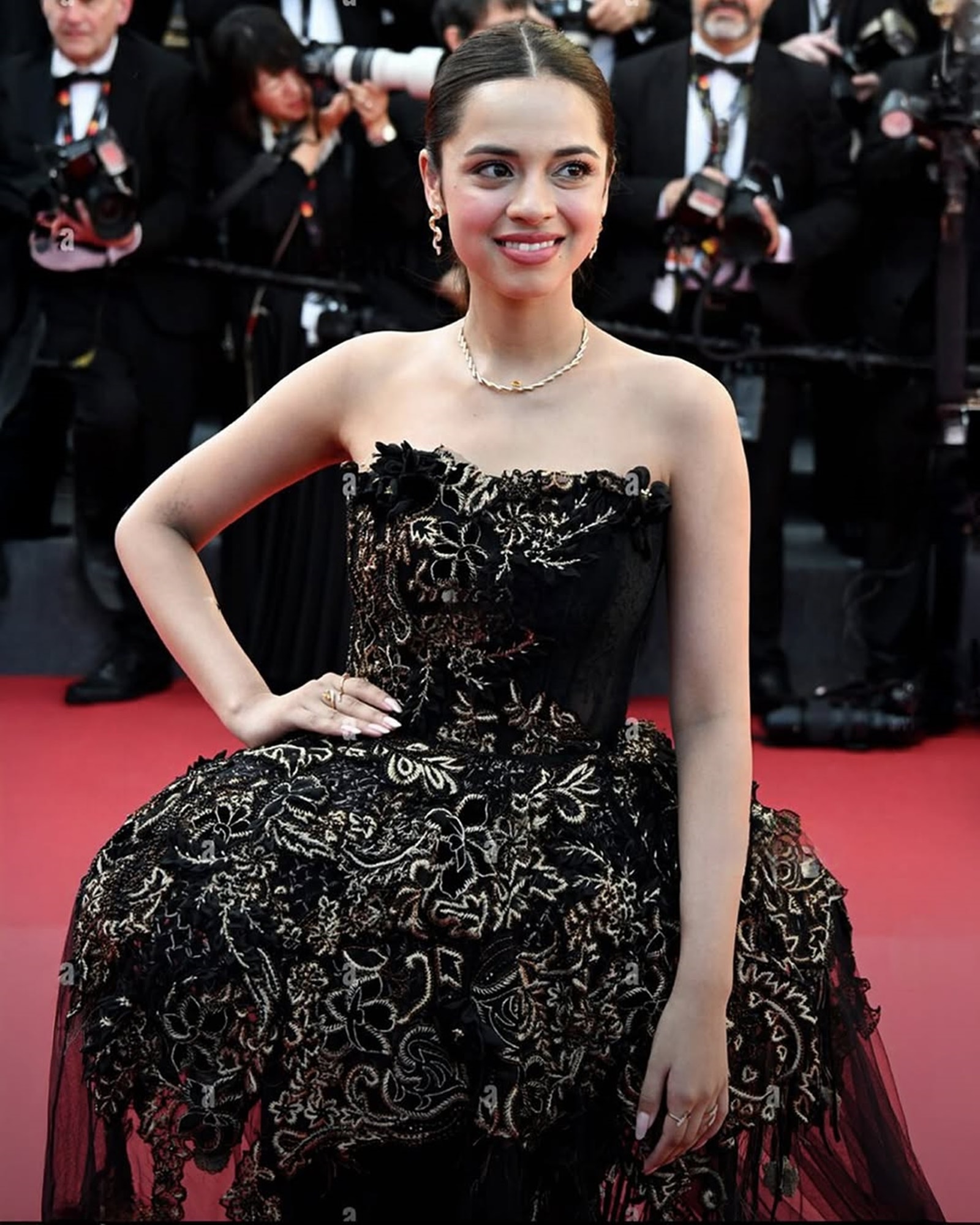Seventeen-year-old Nitanshi Goel’s Cannes red carpet debut not only turned heads, but her custom ensemble paid homage to her traditional roots. Her black gown by JADE by Monica and Karishma fused heritage with couture, featuring signature Kasab embroidery and delicate gold macrame detailing. “It brought together heritage and whimsy in perfect harmony,” said designer Monica Shah.
Goel wasn’t the only one bringing Kasab embroidery to global spotlight. Content creator Masoom Minawala’s Cannes 2025 look, a bespoke Arpita Mehta creation, showcased mirror work, gold Kasab, and fine cutdana in soft beige and gold tones — an ode to timeless, intricate, and globally-relevant Indian artistry.
With Kasab embroidery enjoying a moment in the limelight, we trace its origins, evolution, and how modern Indian fashion is helping this age-old craft survive and thrive.
Origin and legacy
“Kasab embroidery, a distinguished form of metallic threadwork, has been a part of India’s rich textile heritage,” said Mansee Khera, assistant professor at Alliance School of Design, Bengaluru, speaking to indianexpress.com. She explained that it originated in regions like Gujarat and Rajasthan, where gold or silver threads – called Kasab – were woven into luxurious fabrics like silk, velvet, and brocade.
“Traditionally associated with royalty and ceremonial wear, the embroidery is characterised by techniques such as couching, where threads are laid on the fabric surface and stitched down with fine thread. The resulting patterns, often floral or geometric, reflect both cultural influences and artistic expression,” said Khera.
Apurva Shah, creative director and founder of Label Apurva, said, “Its roots trace back to the Mughal era, where it was extensively used in zari work on royal garments, temple textiles, and ceremonial attire. Over time, Kasab found its way into regional embroidery styles like zardozi, gota patti, and aari work.”
Shah explained that traditionally, Kasab was reserved for grandeur. “It wasn’t just decorative, it was symbolic. The gleam of Kasab on fabric often signified status, celebration, and sanctity. Brides wore it as blessings woven into their trousseau, dancers draped it to catch the light with every twirl, and royals commissioned it to express power and splendor,” she said.
Story continues below this ad
How is Kasab woven?
Describing the process as “poetry in motion,” Shah said that Kasab threads are created by flattening metals like gold or silver (now often substituted with metallic polyester) and wrapping them around a silk or cotton core.
“These threads are then embroidered onto fabrics like silk, organza, velvet, or georgette using techniques such as zardozi, dabka, aari, or gota patti, depending on the region and design. The process is entirely done by hand, and every motif can take hours, sometimes days, of focused craftsmanship,” she said, adding that artisans generally inherit this skill from generations before them, and each piece carries their fingerprint.
 Nitanshi Goel stuns in a black ensemble with Kasab work (Source: Instagram/@nitanshigoelofficial)
Nitanshi Goel stuns in a black ensemble with Kasab work (Source: Instagram/@nitanshigoelofficial)
Inside the world of Kasab
Kasab embroidery is far from uniform. According to Shah, it comes in various types, each with its own distinct personality:
Gold Kasab (Sunehri Kasab) – Traditional and regal, used in bridal and festive wear.
Story continues below this ad
Silver Kasab (Chandi Kasab) – Cooler in tone, often paired with pastels and whites.
Antique Kasab – A more muted gold or bronze tone, perfect for vintage-inspired pieces.
Coloured Kasab – Modern variants using dyed metallic threads to add playful accents.
Flat vs. Twisted Kasab – Flat threads for a sleeker look, twisted for texture and dimension.
Story continues below this ad
Mixing antique and matte Kasab in embroideries helps give it a contemporary yet timeless touch.
Where modernity meets tradition
“The truth is, the art of Kasab is delicate, not just in execution but in existence,” said Shah.
According to her, the craft faces numerous challenges: a drop in mass market demand due to cheaper machine embroidery, a lack of new artisans entering the field due to low economic returns, rising material costs, and dwindling patronage. “The displacement of local artisan clusters post-pandemic has further compounded the issue,” she said.
However, in an attempt to stay afloat against the rising tide, contemporary fashion designers are reinterpreting Kasab embroidery, and integrating it into modern silhouettes and ensembles. According to Khera, this fusion of traditional craftsmanship with current design sensibilities not only preserves the art form but also introduces it to new audiences, ensuring its relevance in today’s fashion landscape.



